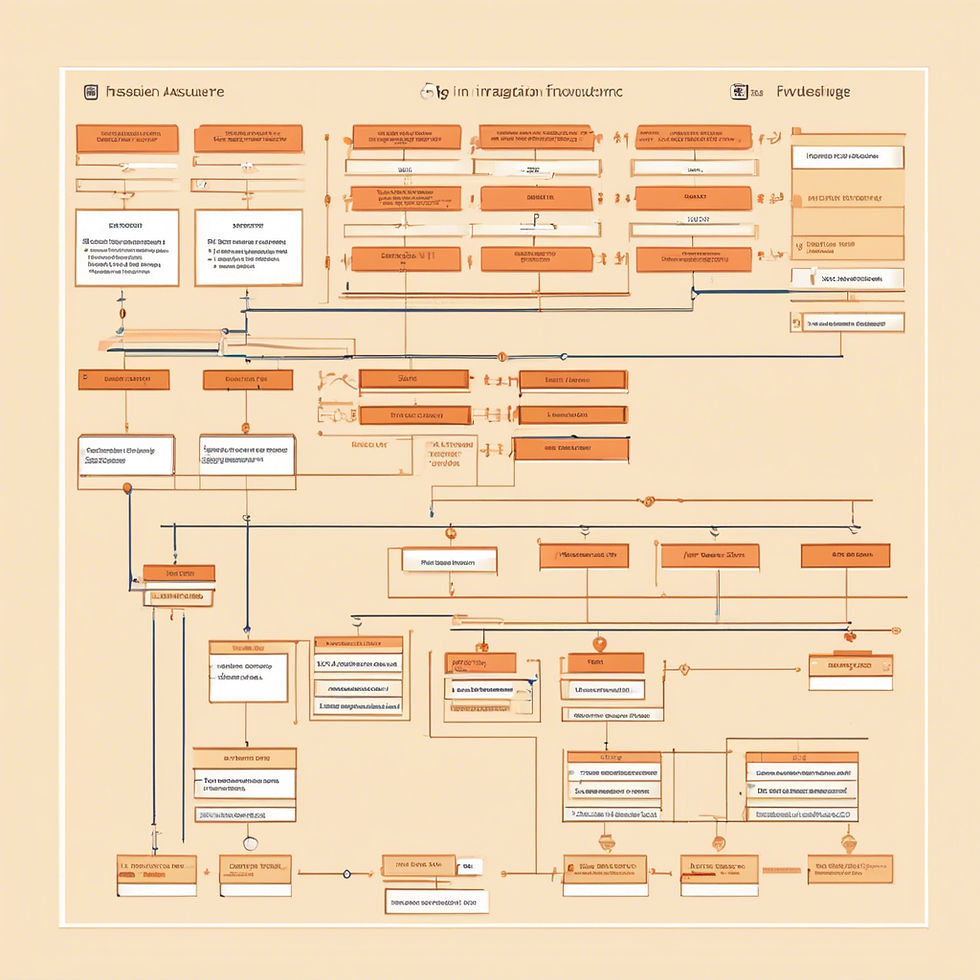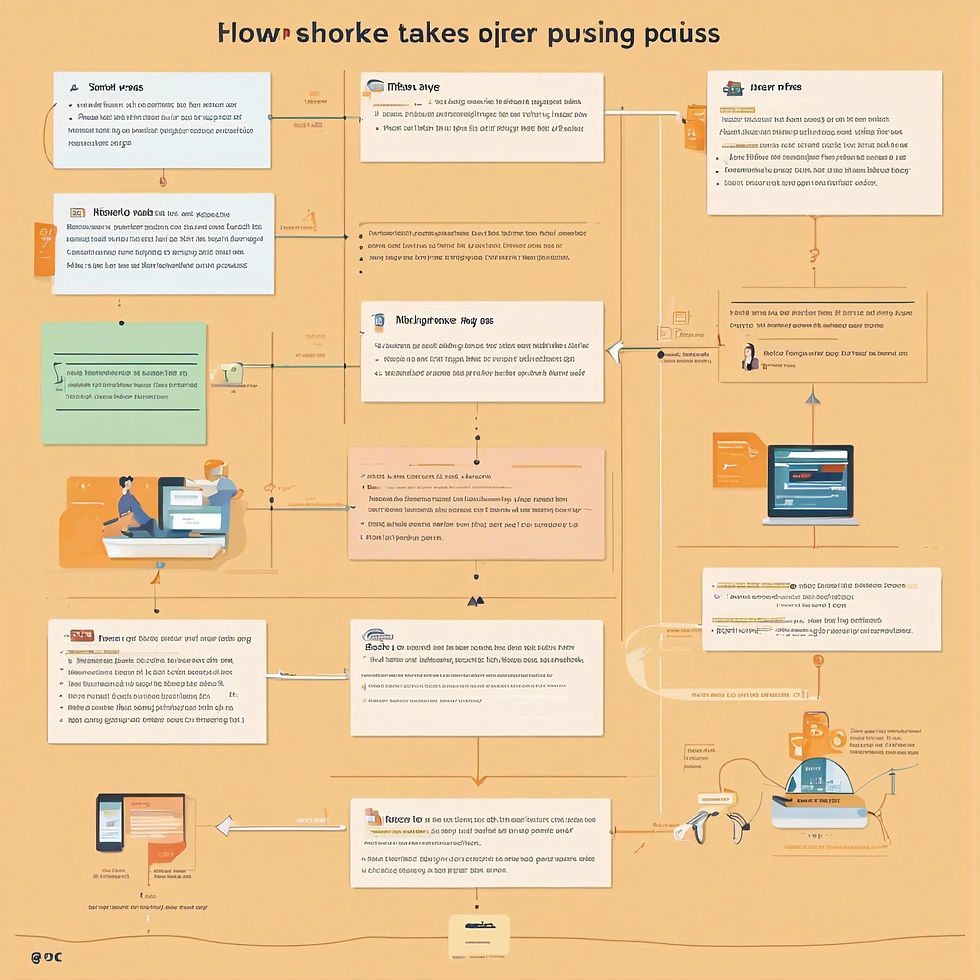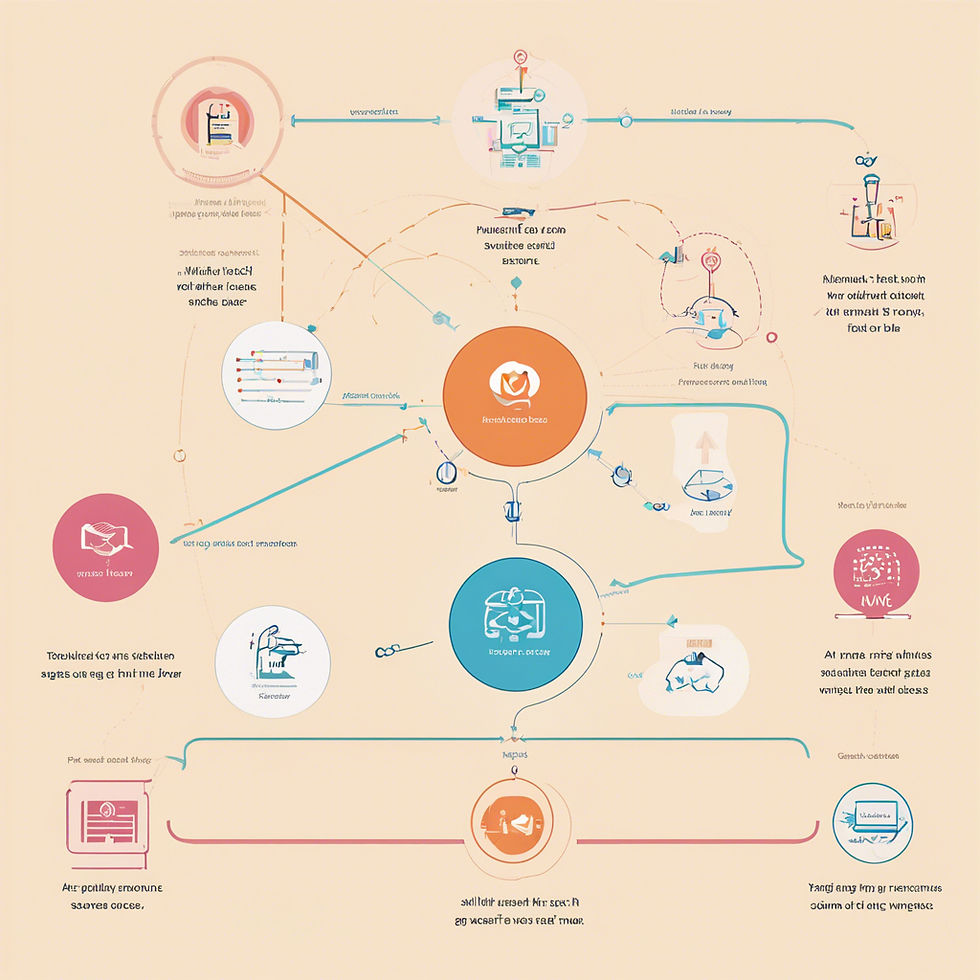Understanding the Difference Between User Flow and Information Architecture
- Epifania

- May 18, 2024
- 3 min read
In the realm of UX design, two critical concepts often discussed are User Flow and Information Architecture (IA). Both are pivotal in creating intuitive and effective digital experiences, but they serve different purposes and are used at different stages of the design process. Let's delve into what each term means and how they differ.
Information Architecture: Structuring the Foundation
Information Architecture (IA) is the practice of organizing and structuring content in a way that makes it easily accessible and understandable for users. It’s akin to building the skeleton of a website or application, ensuring that every piece of information has a logical place and is easy to find.
Key Aspects of Information Architecture:
Content Organization: IA involves categorizing information into a coherent structure. This can be done using methods like card sorting, where users categorize information in ways that make sense to them.
Navigation Systems: Effective IA designs intuitive navigation systems that help users move through the site seamlessly.
Labelling Systems: Proper labelling ensures that users understand what information they will find when they click on a link or open a section.
Search Systems: Good IA includes a search functionality that helps users find specific content quickly.

Example of a website’s Information Architecture (IA) diagram.
According to CareerFoundry, IA is fundamentally about “structuring, labelling, and organizing content effectively and sustainably.” This process sets the groundwork for all subsequent design decisions and ensures that the site’s content is logically arranged.
User Flow: Mapping the Journey
User Flow, on the other hand, maps the steps a user takes to achieve a particular goal on a website or app. It’s a visual representation of the user’s journey through the interface, from an entry point to the final interaction.
Key Aspects of User Flow:
Goal-oriented: User flows are designed with the end-user’s goals in mind. Each step in the flow is intended to guide the user towards completing a task.
Interaction Points: User flows detail the various interactions a user will have, such as clicks, taps, and form submissions.
Decision Points: They also outline decision points where users choose between different paths based on the options available to them.
Feedback Loops: Effective user flows include feedback mechanisms, ensuring users know the outcome of their actions.

The flowchart illustrates the steps users take from the homepage to completing a purchase.
As explained by ProductPlan, creating user flows involves identifying the different paths users might take and ensuring that these paths are optimized for ease and efficiency .
The Core Differences
While both IA and user flows aim to improve user experience, they focus on different aspects of the design process.
Focus and Scope:
IA focuses on the structural design of the information space, ensuring all content is organized logically and is easily navigable.
User Flow concentrates on the user’s journey and interactions, detailing the steps taken to complete tasks and achieve goals.
2. Design Stage:
IA is typically addressed early in the design process. It sets the foundation upon which the rest of the site or application is built.
User Flow is often developed after IA once the content is organized. It helps in visualizing how users will move through the structured information.
3. Output:
IA results in site maps, content inventories, and wireframes that define where and how content is placed.
User Flow results in flowcharts and diagrams that map out the user’s path from entry to goal completion.
4. Objective:
IA’s objective is to create an intuitive structure that enhances findability and usability.
User Flow’s objective is to streamline the user’s journey, minimize friction, and ensure a smooth process from start to finish.
Therefore, both Information Architecture and User Flow are indispensable in UX design. IA provides the necessary structure and organization of content, creating a solid foundation for usability. User Flow, meanwhile, ensures that users can navigate through this structure effortlessly to achieve their goals. Understanding and effectively implementing both concepts can significantly enhance the user experience, leading to more intuitive and successful digital products

An integrated diagram showing how IA and User Flow work together in the design process.
By integrating the meticulous structuring of IA with the goal-oriented mapping of user flows, designers can create digital environments that are not only well-organized but also user-friendly and efficient. This synergy is essential for crafting experiences that meet user needs and drive engagement.
CareerFoundry. "A Beginner's Guide to Information Architecture." CareerFoundry.
Prototypr. "UX Design 101: Information Architecture — Structuring & Organizing Content." Prototypr.
CareerFoundry. "How to Create a User Flow." CareerFoundry.
ProductPlan. "User Flow." ProductPlan.commerce Design



Comments